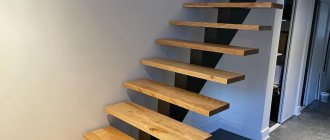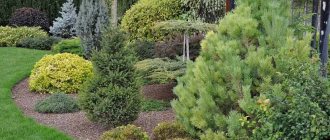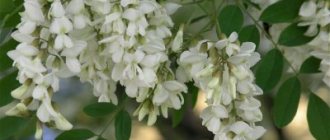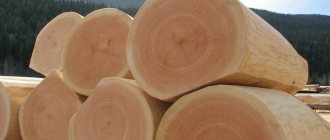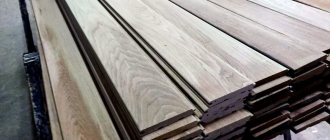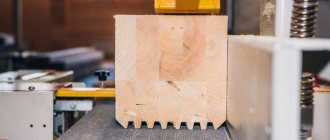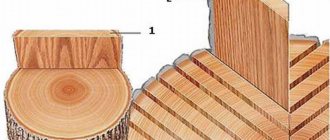Grade is used as characteristic parameters of wood, which allows us to evaluate the quality of lumber. This practically does not concern humidity and other parameters important for the buyer, but only damage to the wood itself, for example, discoloration on the canvas and the presence of knots.
Folded timber
It must be said that with the development of processing technology, the influence of grade on the quality of lumber is decreasing. At the same time, grade 1 timber remains the most valuable. At the same time, processed wood in its actual qualities may not be inferior to selected quality, although formally it is made from low-quality wood.
Content:
- Features and distinctive features of second grade lumber
- Difference between second grade boards and first grade boards and application
- The difference between second-grade timber and first-class timber and application
- Advantages
- Minuses
- Tips for choosing
Second-grade lumber refers to lumber of good, but not superior quality. They do not have such an impeccable appearance as first-class ones, they are not much inferior to them in terms of hardness and strength, nevertheless they are suitable for the vast majority of construction work in which wood is used, mainly two types of goods are purchased for them.
We determine the variety ourselves
When assessing the external characteristics of lumber, several properties must be taken into account.
They are as follows:
- Uniformity of structure;
- Durability of wood;
- External defects;
- Humidity level;
- The area of the affected areas around the perimeter.
It is recommended to determine varietal qualities from the worst sides. The sides and edges of the material indicate its structure.
After that, markings are applied to the surface indicating the criteria and properties of the lumber.
Features and distinctive features of second grade lumber
Sorting by grade is carried out by inspecting the material for the presence/absence of various defects. The division occurs in accordance with the requirements of GOST 2695-83 for deciduous wood and GOST 8486-86 for coniferous wood. The following are allowed in second grade lumber:
- Deep cracks on the edges and faces of the product, but their total length should not exceed one sixth of its length;
- Fused and unfused knots no more than 40 mm. in cross section and a total area of not more than one-fourth the width per meter;
- Sapwood staining, mold and fungal marks (spots and streaks). However, their total area should not occupy more than 20% of the total area of lumber;
- Through cracks in the layers. Their length is limited to ten centimeters. If there are more cracks, then the lumber is of lower grade;
- End cracks. They can be present only on one side, and the length of the defects should not exceed one sixth of the length of the product;
- Sloping fibers, heel, pockets, double core;
- Warped. Longitudinal warping should not be more than 0.1% of the total length, and transverse warping should not be more than 0.5%;
- Wormholes, but no more than two per meter.
- The bevel of the cut should not exceed 5%;
- Wood moisture content is no more than 22%.
Rot, foreign inclusions and sharp wane over the entire width of the edge should be completely absent in lumber made from grade 2 wood.
Selected category of edged boards
Edged boards of Extra grade or Selected category are mainly produced to order. For this grade, healthy fused knots, rib, face, edge and partially fused knots are allowed. The exact number of permissible deviations is indicated in the standard tables. The presence of rotten, shriveled branches is prohibited. The material may contain 10% deep end cracks and 16% shallow cracks. Selected wood should show no signs of fungal diseases. In this case, the non-parallelism of the edges and warping is set within 0.2-1.0%.
Difference between second grade boards and first grade boards and application
A 2nd grade board has almost the same characteristics as a 1st grade board, but may have wane, resin pockets and bluish spots.
In terms of size, edged boards are usually 25, 40-50 mm thick and 100, 150 mm wide, 3, 4, 6 m long. If the numbers are different, then it is already considered substandard and costs less.
Depending on the characteristics of the 2nd grade edged board, it can be used for rough floors and ceilings. The appearance of the boards in this case does not matter much. Second grade boards are also suitable for roof insulation. The thermal conductivity of wood of the mentioned grade is almost the same as that of first-grade wood. Such boards are also useful for making temporary buildings (sheds, booths, etc.). They may not turn out very attractive, but they will last a long time. For shields and fencing structures, the use of second-grade boards is also justified. Sometimes pallets and containers are made from such boards. For the manufacture of the latter, lower-grade lumber is often used.
In addition to what has been said, 2nd grade boards are often used for interior finishing of bathhouses, attics, gazebos and loggias. Knots, as well as some other defects on the boards in this case, give a certain flavor to the interior of the room.
Criteria for selecting second-grade lumber
When purchasing lumber, you should consider the purpose of use. It is recommended to study the requirements for the future design. For example, a grade 2 board has good characteristics, but its defects can negatively affect the load-bearing properties of the structure. Falling out knots and cracks are undesirable when installing frames and beams.
It is recommended to select lumber according to the following criteria:
- Number and severity of defects. The fewer flaws a board or timber has, the better.
- Availability of antiseptic treatment. Protects against rotting and damage by insects.
- Price. Must be of good quality. A greatly reduced price may indicate the seller’s dishonesty and low quality of the product. Second-class boards and beams cost approximately 25-30% less than first-class ones.
The difference between second-grade timber and first-class timber and application
According to the description of the appearance, 2nd grade timber looks less presentable in comparison with first-class timber; the presence of small fallen knots, pockets of resin, darkening and fungal stains, and deep cracks is allowed.
As for the sizes of second-grade timber, there is a very wide variation in length. GOST 24454-80 sets from 1 to 6.5 m with a gradation of 25 cm. Most often you can find a six-meter one on sale. The thickness of the edged timber can be from 100 to 200 mm in increments of 25 mm. The timber is also sold with a thickness of 250 mm. The width varies from 100 to 250 mm with gradations of 25 mm. In any case, it should be greater than the thickness or equal to it, but not less.
Temporary and auxiliary building structures are often made from second-grade edged timber. It is too expensive to use the highest grades of timber for them, and due to the small differences in characteristics from the 2nd grade timber, it does not make sense. The rough load-bearing subsystems, which are covered with sheathing, are also made from second-grade timber. The fact is that, in addition to the not particularly aesthetic appearance, such timber has somewhat weakened load-bearing capabilities. This disadvantage is mainly due to the defects mentioned above. You can find fences, canopies, and cabins made from the specified material. They serve no less than if they were made from first-class timber, but the cost is much lower.
Basic GOST standards regulating the type and quality of lumber
Let us list the main “wood” GOSTs and their differences:
- GOST 18288–87 describes the terms of the sawmill industry, with its help you can understand the assortment, as well as many professional names that are often used by suppliers;
- Speaking about quality, especially of coniferous species, it is worth making the remark that it is precisely those characteristics that ensure longevity of operation that are taken into account. When rejecting, it is important to identify wood defects that reduce the grade. For this purpose, the GOST 2140-81 standard has been developed;
- The dimensions of wood materials are assessed using GOST 24454–80; the standard determines permissible deviations, for example, grade i. The rules for measuring wood are described by the GOST standard 6564–84;
- Information about the grade and how it is determined is contained in GOST 8486–86, which describes detailed defects in boards and timber, relating, for example, to grades 1 and 2, as well as features of grade 3. Note that the grade is affected not only by the type of defect, but also by the number of such defects per unit area.
For example, a grade 2 coniferous beam will differ from a similar grade 3 oak beam in the number of flaws, but they will be present in both cases. In general, it is not practical to distinguish between 4 grades; how to visually distinguish grades by defects is shown in the photo. Defects differ from defects in that they are a feature of living wood, and not defects resulting from mass processing. Defects also have their own classification and affect the assessment of quality, for example, the same knots are divided into healthy, fused and rotten. In selected wood, even the slope of the fibers is regulated, but for timber, the number of knots does not affect anything.
2nd grade
Imitation is aimed at using relatively illiquid material (mainly 4 grades) and increasing its grade using processing technologies. The average cost increases the attention of manufacturers to such processed natural materials, which occupy a middle position between natural wood and composite.
Advantages of second grade lumber
The advantages of second-grade lumber that are important to the buyer include:
- Lower cost compared to products made from premium wood. The price difference can reach 30% or more.
- Good strength characteristics. Due to the presence of defects, they may differ slightly from the characteristics of first-grade wood, but still remain high.
- Long service life with proper care. The defects allowed by GOST almost do not reduce it.
How lumber is sorted
Softwood lumber can be made from spruce, pine, larch, cedar and fir. The best-selling products are affordable products made from spruce and pine. When producing softwood edged lumber, round timber is practically not pre-sorted; it is sawn in a mixed form. In this case, sorting is not economically profitable, since it will lead to a sharp increase in the cost of the material. But after sawing, when all the defects are visible on the products, the products are divided into grades and categories.
Note that the quality and physical characteristics of spruce and pine lumber are identical; they are suitable for solving many construction problems. The same sorting criteria apply to them.
Tips for choosing
When choosing, it is not enough to know about timber and boards of the 2nd grade, what they are, you also need to take into account a number of other factors.
- Understand exactly for which structures you intend to use second-grade lumber products. Check out the acceptable values for them. In particular, strength is extremely important for load-bearing elements, and for those products that are intended to be used for insulation, a minimum number of through cracks and holes from fallen knots, etc.;
- Find out the average price and base your choice on it. Under no circumstances should you buy sawn timber that is too cheap. Surely there is a serious flaw in them that forced the seller to reduce the price;
- Pay attention to the wane. Less is better. You will have to delete it anyway. Otherwise, insects will appear under the bark, which will seriously damage the wood and significantly reduce its service life;
- Try to find out as much as possible about the storage conditions of the batch of material. Further warping of the wood, its moisture content and changes in linear dimensions depend on them.
Manufacturers
Regardless of the required volume of lumber, every buyer wants to receive a quality product from a reliable and reputable manufacturer at a fair price. With a little time and effort, finding the right company is not difficult. Ease of access to thematic information will help with this. On industry and rating network resources you can find complete lists of companies and manufacturing companies in the timber industry, sort by rating, find out about representative offices in the regions, view product catalogs and manufacturer's selling prices, find out contact information or go to the official website of the company you are interested in. It will also be useful to study the reviews of practicing professionals on thematic forums. You should also not lose sight of the offers and features of the regional building materials market, recommendations of friends and sales consultants.
Points to pay attention to when choosing a manufacturer:
- The presence of its own production facilities confirms that the company is not an intermediary, does not delay delivery of finished products and can ensure the fulfillment of contractual obligations in full.
- Technical equipment with the latest generation equipment, the use of modern technologies, the presence of our own quality control service.
- Location of production facilities. Based on this indicator, one can judge the region of origin of the raw materials. In the northern regions, the wood is stronger, more durable and of higher quality.
Technological sawmill production
